Julian Alps are a relatively small area in the north-eastern Italy and north-western Slovenia. But they have a high concentration of huts and free shelters and bivouacs, more than 80 in total.
Most of regular huts are officially open for two, or two and a half summer months only. But in many of them you will find a winter room that is always open.
In fact, Julian Alps are just one part of the area. The official list of huts and shelters of the Alpine Association of Slovenia includes around 177 objects throughout the small country.
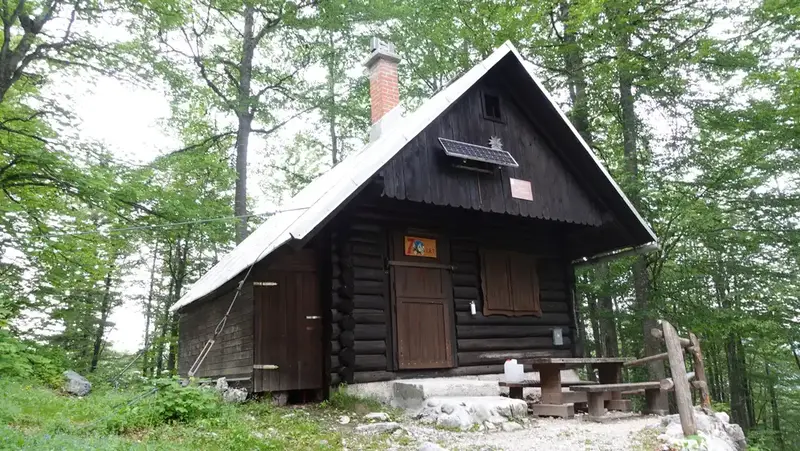
30 Free shelters and bivouacs in Julian Alps
Apart from regular huts, there is also a number of bivouacs and shelters that are always open. There you can sleep for free, but you can also leave a voluntary contribution in some of them.
There are several different types of these bivouacs and shelters:
- Some are typical metal containers that you will find anywhere in the Alps. On the Italian side they are usually in red color, and they are typically gray in the Slovenian Alps.
- There are a few that are built from wood and those are particularly pleasant. Typical examples are Bivak pod Špikom (Bivouac under Spik, the picture above) and Bivacco Luca Vuerich.
- There are a few that can be described as hunters huts and their main part is normally locked. But even here you can find an attic with place to sleep. You can see one in my text about Bavški Grintavec.
- A few of them are new and modern architectural wonders, and the best examples are Bivak II na Jezerih, and cabin on Mount Kanin shown below.
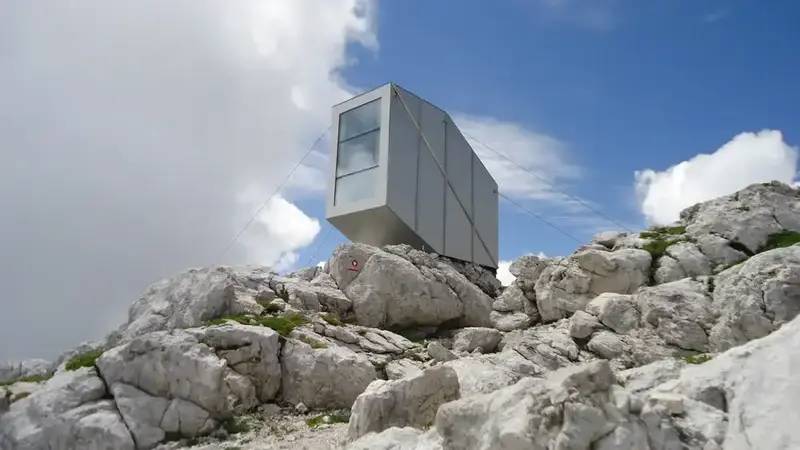
The picture of the map below shows bivouacs on both Italian side (red) and Slovenian side (yellow). The premium map is interactive and zoomable, so you can see lots of details when you zoom in.
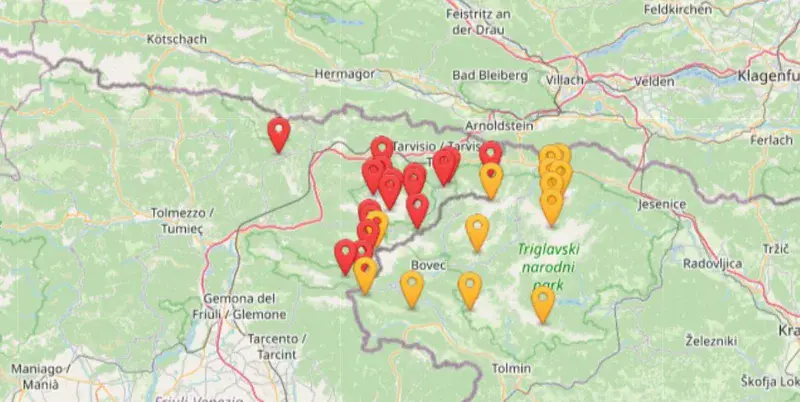
In some of the shelters you will find a wood burning stove, the Bivak za Akom shown below is one example. I have spent a few pleasant hours relaxing by the fire in this shelter.
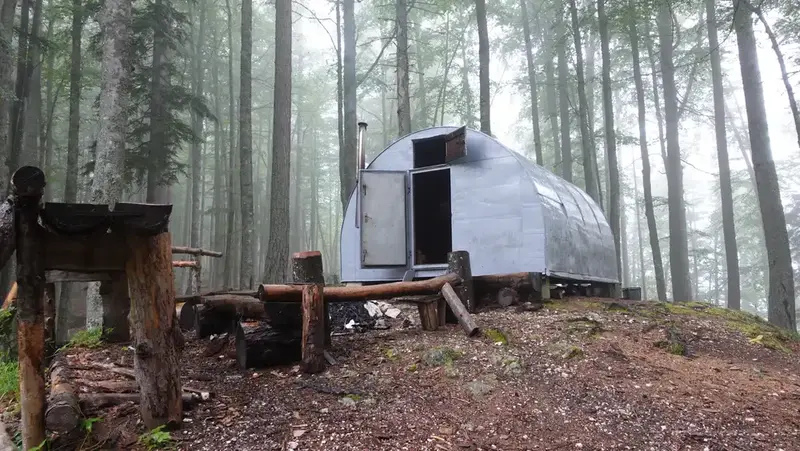
Note that some of these shelters on the Slovenian side may be hard to find. This is on purpose, most of them are built for true alpinists, and this is why the routes to some of them are not marked.
The bivouac in the picture above is in the woods, but do not be fooled with this. In fact, it is very close to the cliffs where rock climbers go. The same holds for the Bivak pod Špikom (Bivouac under Spik) in the top picture above; namely, Špik mountain directly above it is an alpinists’ paradise.
To illustrate the issue of non-marked routes, last summer I tried to get to the Bivak II na Jezerih, and after a few fruitless hours, I had to give up and go back. Could not find the route to the shelter which is the most spectacular in the Triglav National Park. This is why I have no picture of it to show to you.
Yet another example. You have seen Bivak za Akom in the picture above; well, I had to go there two times to find the shelter.
Regular huts & bivouacs together: more than 80
Now see how the map looks when you add regular huts (blue markers). This may be useful to plan your trip and to know where you can get meals, and to avoid too much stuff in the backpack. Clearly, far more huts are on the Slovenian side.
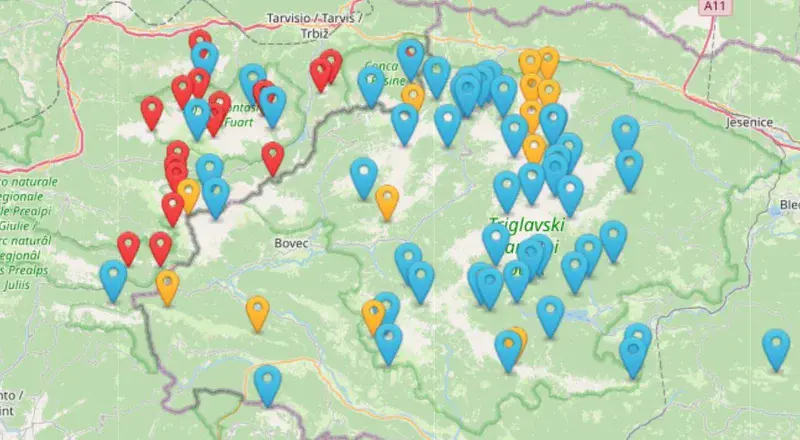
Unlock the Full Premium Interactive Maps of Huts & Free Shelters in Julian Alps
The overview and list of locations above are free for everyone. For the complete experience, get instant lifetime access to two premium interactive maps: one focused on free shelters & bivouacs, plus a bonus map combining them with regular guarded huts.
- Main Map: More than 80 free shelters & bivouacs (unguarded huts, bivouacs, emergency shelters, winter rooms) with precise markers
- Bonus Map: All free shelters + regular guarded huts together – perfect for flexible multi-day planning
- Clickable pins linking to detailed descriptions, access routes, photos, and resources
- Fully zoomable, searchable, with terrain/satellite views, and mobile-friendly
- Regular updates as new locations are verified or changes occur
- One-time payment – no subscriptions or recurring fees
- Coverage of both Slovenian (Triglav National Park) and Italian Julian Alps
Instant access after payment • Supports independent Julian Alps hiking & climbing content
Each of the markers in the premium map is clickable, so you can have extra information from various sources, including some of my my own separate posts.
In conclusion just to stress that I have visited many of the huts and shelters in the map above, and I have even slept in some of them. So if you have questions, please let me know in the comment box below.
Note also that there are many official campsites around as well, and this app will help you to find what you need and make reservations.
Subscribe to my weakly newsletter and stay informed, the subscription form is given below. Thank you for reading.
Leave a Reply